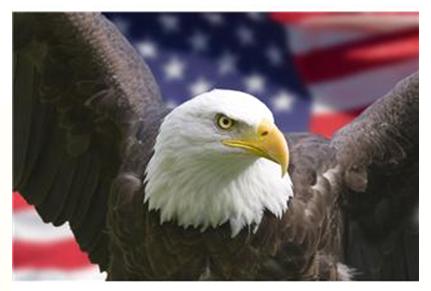Bird Watching
The subdivision I live in is a designated Bird Sanctuary, so bird watching is easy to do. Glancing up to the sky or out to the water, it's not uncommon to see geese and other birds. Vultures will be on the ground picking away at roadkill, ducks and others can be seen on the farm down the road, and once I even saw a bird carrying a freshly-caught fish. It looked like it was holding a little suitcase.
National Bird Day is January 5th
There are about 425 different species in Virginia, in 52 families. Our local region lies between the mighty Potomac and Rappahannock Rivers, home to some of the largest concentrations of bald eagles on the entire Eastern Seaboard.
Area bird watching hot-spots include:
Five well-marked, year-round trails originate at the visitor center, with more than five miles of footpaths. A sixth trail is open for use from the beginning of October through the end of March. A variety of Songbirds can be found feeding in the canopy, and the park's main attraction is the chance to view bald eagles along the Potomac River. There are guided eagle tours available (call ahead for information and reservations). There are also wading bird and winter waterfowl viewing opportunities. Caledon is located in neighboring King George County near the intersection of Routes 206 and 218. Phone 540-663-3861
It's adjacent to the Westmoreland Berry Farm. Stop at the farm first for maps and information about the preserve. Phone 804-224-9171
A one-mile long nature trail leads through coastal mixed pine forest and provides an interesting spot for viewing fall migrants.

Bird watching visitors who walk on 200-foot bluffs overlooking the Potomac River will be rewarded with views of bald eagle, osprey, and wintering waterfowl.
Common species to go bird watching for include great blue heron, green-backed heron, ruddy duck, turkey vulture, osprey, bald eagle, red-tailed hawk, spotted sandpiper, mourning dove, and northern mockingbird. Located off Rt. 3 east near the town of Montross in Westmoreland County. Phone 804-456-2105
An observation platform here offers viewing opportunities of a rich, freshwater tidal marsh, which is alive year-round with great blue herons and other wading birds, bald eagles, osprey, and waterfowl such as wood ducks. To get here from Stratford Hall, return to Route 3 East and continue 7.9 miles, then turn left onto Route 202. Proceed 17.6 miles, turn left onto US 360 East, travel 6.9 miles and turn right onto Route 201 South. Go 3.4 miles and turn left onto Rt. 642. The preserve entrance is 0.3 miles on the left. The access is a dirt lane running between hedgerows that can be easily overlooked. Phone 804-225-2303
Upcoming Bird Watching Events:
Past area bird watching events:
February 24, 2018 at 9:00 a.m. at Washington's Birthplace
Jan. 10, 2015 - Winter Birding with Andrew Dolby at Stratford Hall.
December 8 at Washington's Birthplace
June 21, 2014 at Stratford Hall
Frank Schaff, expert birder and member of the Northern Neck Audubon Society, will conduct a bird walk throughout the Stratford Hall grounds. The walk will begin at Stratford’s Visitor Center at 9:00 a.m. and will traverse a wide range of wildlife habitat, including woods, open fields and shorelines. Possible sightings include swallows, warblers, woodpeckers, and bald eagles.
Please wear comfortable walking shoes. Some participants may want to bring cameras. Several pairs of loaner binoculars will be available, but it is advisable to bring your own pair. This program is FREE to the public. The walk will end at 2:00 p.m.
Monday, December 12, 2011
Pope’s Creek (George Washington Birthplace National Monument). This bird walk will be led by Frank Schaff (804-462-0084)
January 14, 2012
Birding at Stratford Hall: Left Out In the Cold.
with Andrew Dolby, PhD, University of Mary Washington
They’ve tugged at your heartstrings before: those balls of fluff that wait patiently nearby as you fill up the feeder on a cold January morning. While we can’t deny our winter birds a little sunflower seed and suet, we can be amazed at how tough these Carolina Chickadees and Tufted Titmice really are. Birds are high-performance biological machines. How do such small warm-blooded animals with impressive energetic demands survive winter, when food is scarce and temperatures are cold? This presentation will cover both anatomical and physiological adaptations that allow birds to cope with the challenges of winter.
April 21, 2012
Songs and Calls: No Idle Chatter
with Andrew Dolby PH.D.
Most of us take for granted that the sound of birds constantly surrounds us, but what are birds’ songs and calls really communicating? The scientific study of birds’ vocalizations has been revolutionized over recent decades to reveal a truly sophisticated communication system. This talk will introduce the anatomy, physiology, and ecology of bird song and will explain the modern tools that biologists are using to decipher their hidden messages. Bird song may sound like nature’s pleasant background music to our ears, but for the birds, singing is serious business.
June 16, 2012
Nesting and chick development: Nature’s Architects
with Andrew Dolby PH.D.
Upon examining a typical bird’s nest, one cannot help but be impressed with how birds manage to build such structures without the benefit of opposable thumbs! Since birds can’t afford to carry their young internally, chick development must fully take place in the elements of nature. The critical need to protect incubating eggs and vulnerable developing young in different environments has given rise to astonishingly complex nest architecture. This presentation will cover the surprising array of nest construction, from the most elaborate to the most frugal.
September 29, 2012
Bird migration: Nature’s Incredible Journey
with Andrew Dolby PhD
One of the great athletic performances in all of nature is the regular mass movement of birds from one continent to another, often across great expanses of water and inhospitable deserts. This presentation will delve into the physiological, ecological, and behavioral mechanisms that make such an impressive feat possible. Incredible advances in modern technology have allowed the study of bird migration to become more detailed than ever, and this talk will explain some of these new tools. Finally, intercontinental travel poses unique hazards, and thus, special challenges must be overcome to conserve migratory species.
All bird watching programs are from 9:00 AM-1:00 PM, each costs $10.00 per person, and tickets will be sold at the ticket house. The lecture will begin in the duPont Library. Lunch items will be for sale in the Gift Shop Cafe. The $10 ticket will entitle attendees to a tour of the Great House. These programs are FREE to Friends Of Stratford members. A minimum of 5 registrants is required in order to present each program. Please contact Jon Bachman at rsvp@stratfordhall.org or call 804-493-8030 ext. 2010 to register for any or all of these programs.
April 13, 2013
Birding at Stratford: Mate Choice & Sexual Selection
In some species, males and females look alike, but in others, males are clearly the “show-offs.” Biologists have long recognized that bright colors, elaborate ornamentation, and bombastic song are the means by which males compete with each other for the attention of females. Learn about the forces that have produced the flashiest displays in the animal kingdom.
Our local Ducks Unlimited chapter
Return from Bird Watching to Attractions



New! Comments
Have your say about what you just read! Leave me a comment in the box below.